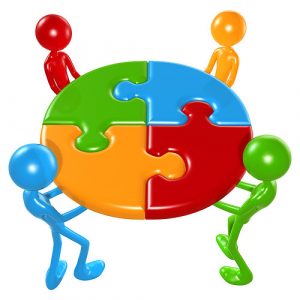Chapter 9: Teams, Teamwork, and Collaboration

Taking on a difficult challenge alone can be a fool’s errand, especially if it requires multiple tools, skills, or ideals that one individual may not possess. Teamwork and collaboration are vital to success within learning organizations through effective team dynamics, experiential learning, and project-based learning. Within this chapter, discussion of the learning styles associated with collaboration, the implications of online collaboration within a modern learning society, and teamwork within modern organizations will be studied.
The learning outcomes for this chapter are:
- Describe the characteristics of teams and what makes a team effective.
- Describe some divergent learning theories associated with collaborative learning
- Compare and contrast the use of online-collaborative learning, and its effect on modern learning organizations.
- Differentiate some common teamwork features within organizations.
- Describe how a team develops within the workplace. Explain some considerations and dynamics that are present when engaging in teamwork in an organization.
Chapter Tips:
- Think about accountability, as a group or a team.
- How would experiential learning be beneficial in a team setting?
- How important is communication within a team setting?

